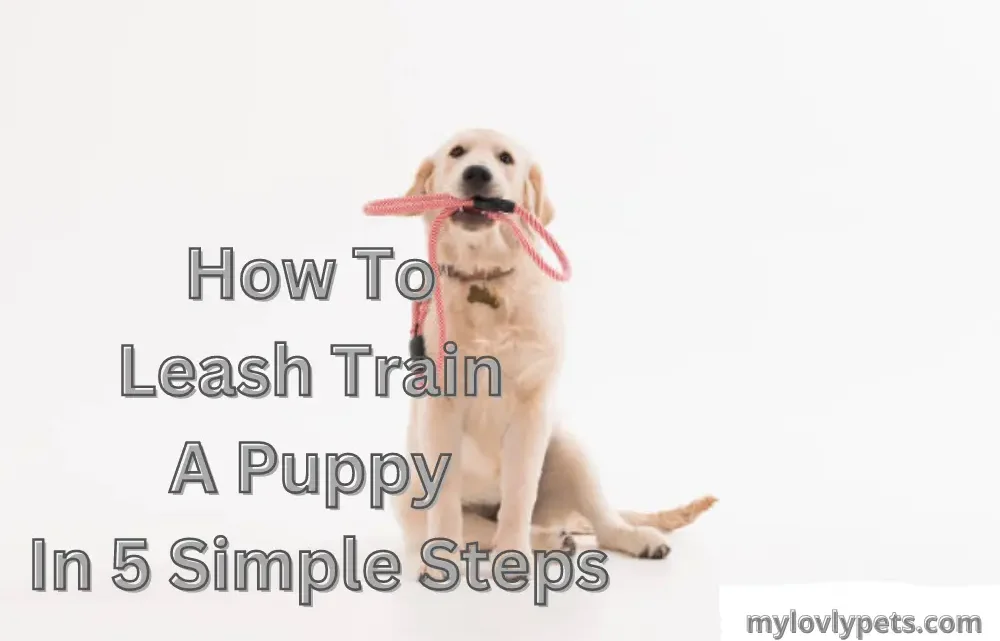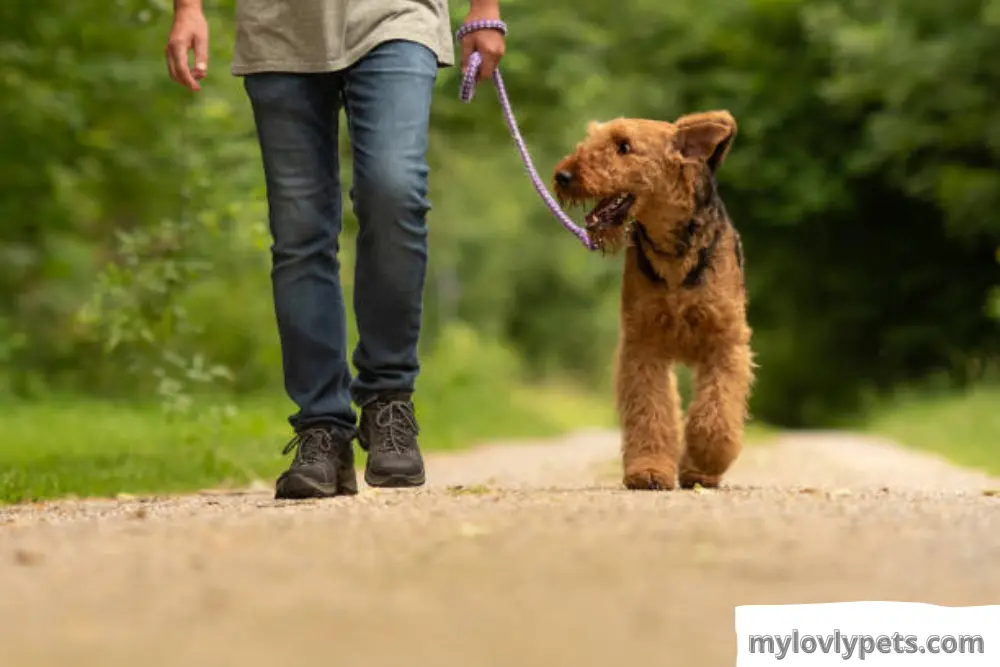
How to Train a 1-Year-Old Dog to Walk on a Leash
(A no-fluff, real-life guide for frustrated owners who just want calm walks again)
Let’s be honest — walking a 1-year-old dog who’s never been leash-trained can feel like trying to control a furry tornado on caffeine. They pull, twist, zigzag, stop to sniff every leaf, then suddenly bolt toward a pigeon like they’ve spotted buried treasure.
But here’s the truth — it’s not too late. One year old is still young. They’ve got energy and curiosity, sure, but also enough brainpower to actually learn how to chill on walks. You just need the right mix of patience, structure, and a bit of dog psychology.
This guide will take you step-by-step through leash training your 1-year-old — no fluff, no fancy jargon, no “be-the-alpha” drama. Just real-world advice that works.
Why 1-Year-Old Dogs Struggle With Leash Walking
If you’ve skipped leash training as a puppy, your one-year-old has already built habits — both good and bad. Most of them boil down to one thing: dogs naturally move faster than humans.
To your dog, the world outside is a theme park — smells, sounds, other dogs, passing cars, grass patches that apparently contain urgent messages. So pulling isn’t “bad behavior” in their eyes; it’s just excitement.
At one year old, dogs:
- Are physically stronger (so pulling works).
- Still have puppy energy but adult size.
- Get overstimulated easily outdoors.
- Haven’t fully mastered impulse control.
And that’s where you step in — teaching them that loose leash = freedom and fun while pulling = nope, we’re not moving.
Gear That Makes or Breaks Leash Training
Before you even start, get the right tools. This part matters more than most people realize.
1. A good leash:
Use a non-retractable leash, 4 to 6 feet long. Retractable ones teach dogs to pull since they’re rewarded with more distance.
2. Harness vs. collar:
If your dog’s a puller, go for a front-clip harness. It gently redirects them back toward you instead of choking their neck. If they’re calm, a flat collar is fine — but skip choke chains and prongs.
3. Treats and praise:
Training without rewards is like trying to work without a paycheck. Use small, soft, high-value treats. And your voice matters — make it happy, not commanding.
4. Optional tools:
Treat pouch, clicker (if you’re into clicker training), and sturdy walking shoes for you. You’ll need them.
Step 1: Indoors First – The “Leash Is Not Evil” Phase
Even though your dog’s older, treat leash training like it’s brand new. Many dogs associate the leash with restriction or excitement, not calmness — so we flip that script.
Start inside the house or in a quiet backyard.
- Let them wear their gear.
Just clip on the collar or harness and let them walk around without the leash. Toss treats occasionally to make it a positive thing. - Add the leash — but don’t walk yet.
Clip it on and let them drag it around (under supervision). This helps them get used to the feel. - Keep it short and positive.
Two-minute sessions. No pressure. End with play or praise.
You’re not teaching commands yet — you’re just building good vibes around the leash.
Step 2: Teach the “Walk With Me” Foundation Indoors
Okay, time to move together. Indoors training helps them focus without distractions like squirrels or noisy cars.
- Hold a treat near your knee.
Say “Let’s go!” and take a few steps forward. If your dog follows beside you — boom, reward immediately. - Loose leash only.
The moment they pull ahead, stop. No yanking. Just freeze. When they step back or turn to you, reward. - Keep it short and fun.
Do a few 2-minute sessions a day. Think of this as muscle memory building — the leash means walking calmly beside you = treats.
Tip: Say their name often in a cheerful tone. Keep the energy playful, not military.
Step 3: Move Outside (But Start Easy)
Now that your dog understands the basics indoors, it’s time to face the big, distracting world. But don’t jump straight to busy parks. Start in your yard or a quiet street.
- Start calm.
Wait until your dog isn’t overly hyped. You can do a few minutes of play first to burn energy. - Stick to short walks.
Five minutes at first. Seriously — short is better than frustrating. - Focus on position, not distance.
Reward every few steps when they’re by your side with a loose leash. Keep treats handy. - If they pull? Be a tree.
Stop immediately. Don’t move until they return to your side or the leash slackens. Then reward and move on.

This teaches them pulling doesn’t get them anywhere — only calm walking does.
Step 4: Handling Pulling and Distractions
Ah yes, the squirrels, cats, kids, birds, or the random smell of something 50 feet away. This is where patience gets tested.
The trick is redirection, not confrontation.
- Use the “U-Turn.”
If your dog pulls hard, don’t yank — just turn around and walk the other way. They’ll catch up and learn that they must watch you to know the direction. - Stop and reward calm moments.
The moment they walk beside you — even two steps — reward that calm focus. - Upgrade your treats when outdoors.
Outdoors distractions are stronger; your rewards should be too. Use chicken, cheese, or whatever makes your dog light up. - Avoid punishment.
Leash pops, yelling, or jerking only make dogs tense and confused. You’re building trust, not fear.
Step 5: Add Structure and Commands
Now that your dog’s calmer on leash, let’s make it more intentional.
Teach a release cue — like “Okay!” or “Free!” — that means they can sniff around. This prevents constant tugging for exploration.
Introduce direction cues:
- “Let’s go” – move forward.
- “Wait” – pause before crossing streets.
- “Easy” – slow down when excited.
This structured communication gives your dog clarity, and clarity creates calm.
Step 6: Gradually Increase Challenge
You’ve nailed the basics — now keep raising the difficulty in small steps:
- Walk in busier places gradually.
- Increase walk duration slowly (10 mins → 15 → 25).
- Practice around mild distractions first (kids playing far away, quiet park).
- Bring a long line (10 ft leash) for open field practice.
The idea is controlled progression. Every win builds confidence — for both of you.
Step 7: Troubleshooting Common Issues
Here’s where things usually go sideways — and how to fix them:
1. My dog pulls like a sled.
→ Go back to short indoor or backyard sessions. Reinforce the “stop when tight, move when loose” rule. It’s boring but effective.
2. My dog gets too distracted.
→ Lower the difficulty. Train in quieter spots first. Use better treats and shorter sessions.
3. My dog doesn’t care about treats.
→ Try toys, praise, or changing the timing. Some dogs prefer play as reward.
4. They lunge at people or dogs.
→ Increase distance. Teach “focus” cue — say their name, reward when they look at you.
5. They bite or tug the leash.
→ Offer a toy instead. Don’t pull back — that turns it into a game.
The Real Secret: Make Walks Fun Again
Dogs pick up on your energy. If walks become stressful for you, they’ll feel it. Mix in fun moments — stop for sniffing breaks, short jogs, or silly “find it” games with hidden treats.
Walking should feel like a shared adventure, not a battle of control.
A leash isn’t just a rope — it’s a connection. It tells your dog, we’re in this together.

Printable 4-Week Training Plan (With Check Boxes)
You can literally print this and check off as you go. Consistency beats intensity — 10 minutes daily is far better than one long Sunday session.
| Week | Focus | Daily Tasks | Check |
|---|---|---|---|
| Week 1: Indoors Foundation | Get comfortable with leash & collar. Build positive association. | – Let dog wear collar indoors – Clip leash and let it drag – Short “walk with me” sessions in house – Reward calm behavior | ☐ ☐ ☐ ☐ ☐ ☐ ☐ |
| Week 2: Backyard Practice | Start real leash walking in low-distraction area. | – 5-10 min sessions – Reward every few steps – Use “stop when pulling” rule – Keep energy light, end on success | ☐ ☐ ☐ ☐ ☐ ☐ ☐ |
| Week 3: Outdoor Distraction Work | Introduce real-world distractions calmly. | – Walk on quiet street – Practice U-turns & stops – Reward focus on you – Add “let’s go” and “wait” cues | ☐ ☐ ☐ ☐ ☐ ☐ ☐ |
| Week 4: Real-World Mastery | Extend duration & variety. | – Walks 20–30 min – Practice around mild distractions – Use release cue “Okay!” – Gradually reduce treats | ☐ ☐ ☐ ☐ ☐ ☐ ☐ |
Pro tip: Stick this on your fridge. Seeing those little boxes fill up feels ridiculously satisfying.
Bonus Tips from Real-World Dog Lovers
- Walk at consistent times — dogs thrive on routine.
- Keep your leash hand relaxed; tension travels down the line.
- Use your voice — praise calmly when they do well.
- End every walk on a positive note, even if it’s short.
And don’t compare your dog to others. Every dog learns at their own pace. Some take days, others weeks — and that’s okay.
Final Thoughts
Leash training a 1-year-old dog isn’t about dominance, punishment, or trying to be the “pack leader.” It’s about teamwork, timing, and trust.
You’re showing your dog that the best part of the walk isn’t charging ahead — it’s walking with you.
And the first time you take that calm, confident walk where the leash hangs loose, you’ll grin like a proud parent. Because that moment isn’t just training — it’s connection.

Also read: 12 Signs of a Confident Dog/ Understanding Insecure Dog Body Language
📚 References & Further Reading
- American Kennel Club (AKC) – Expert guides on adult dog leash manners, behavior cues, and training fundamentals
👉 https://www.akc.org/expert-advice/training/ - PetMD – Veterinary-reviewed articles on positive leash training, pulling prevention, and dog walking behavior
👉 https://www.petmd.com/dog/behavior - RSPCA (Royal Society for the Prevention of Cruelty to Animals) – Humane training techniques and advice for loose-leash walking and outdoor behavior
👉 https://www.rspca.org.uk/adviceandwelfare/pets/dogs/training - Humane Society of the United States (HSUS) – Dog walking best practices and leash safety guidance for adult dogs
👉 https://www.humanesociety.org/resources/dog-training-tips - Purina Pet Care Team – Practical leash training routines, reward-based learning insights, and calm walking strategies
👉 https://www.purina.com/articles/dog/training - Eukanuba Canine Training Resources – Professional trainer-backed advice on building focus and leash confidence in young adult dogs
👉 https://www.eukanuba.com/articles/training - ASPCA (American Society for the Prevention of Cruelty to Animals) – Science-based obedience and leash training for adolescent and adult dogs
👉 https://www.aspca.org/pet-care/dog-care/dog-training-tips - McCann Dogs Training Academy (Canada) – Practical leash control and loose-leash walking programs designed by certified trainers
👉 https://www.mccanndogs.com/blogs/dog-training - Zak George’s Dog Training Revolution – Step-by-step real-world leash walking tutorials emphasizing positive reinforcement
👉 https://www.youtube.com/user/zakgeorge21 - Journal of Veterinary Behavior & Applied Animal Welfare Science – Peer-reviewed insights on canine learning patterns, reinforcement timing, and leash aggression behavior (summarized from research literature)


